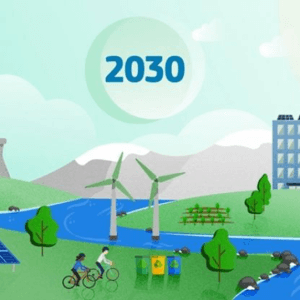Priorities Ensure a low-level greenhouse gas emissions by implementing the Ministry of Economic Development scenario for reducing emissions Expansion of investment programs to support renewable energy projects An increase in the use of renewable energy in the country’s energy and transport sectors Termination of subsidized support for oil companies and the revision of railway tariffs...
Year: 2022
Climate Mitigation Strategic Priorities for Nigeria
PRIORITIES Government needs to implement its climate promises Deliver solar panels to 5 million households Curtail the use and production of coal Make gas flaring illegal Narrative For the rest of the climate scorecard countries, reaching the goal of reducing emissions by 50% by the year 2030 is feasible. However, in the case of...
Climate Mitigation Strategic Priorities for Mexico
Priorities Have government policy move towards favoring clean energy generation Increase the ambition of government policy to reduce emissions (e.g., commit to reducing emissions by 50% by 2030) Increase funding for the preservation of natural resources Institute a carbon tax and incentivize carbon markets Support the Mexican Emissions Trading System (ETS) Narrative This Post...
Climate Mitigation Strategic Priorities for Japan
PRIORITIES The rapid phasing out of coal-powered energy plants The phasing out of coal needs to be executed with clear and feasible non-nuclear, renewable energy expansion and emissions reductions Integrate renewables into the power grid more aggressively beyond the government’s current targets for 2030 of 36-38% to +40% Enable the existing grid to incorporate instantaneous...
Climate Mitigation Strategic Priorities for India
Priorities Greater Policy Coordination Increased Investment A Movement Away from Fossil Fuel Greater Use of Technological Innovation Narrative During the recently concluded COP 26 meeting in Glasgow, India announced its highly anticipated short term (2030) and long term (2070) country climate pledges, mitigation goals, and strategies. It plans to halve its carbon emissions by...
Climate Mitigation Strategic Priorities for the European Union
Priorities More frequent and random monitoring of how countries are complying with their agreed upon goals under the Effort Sharing Regulation by the European Environment Agency Stricter policies guiding the EU ETS, which covers emissions from industry Do more to help countries in the global south decrease their emissions Increase its support for the states...
Climate Mitigation Strategic Priorities for China
Priorities Nationwide programs to identify the impact of closing polluting industries such as coal mines, coal-fired power plants etc. on the livelihood of affected workers Designing the necessary training and reskilling programs to support workers’ transition into new jobs or encourage entrepreneurship Policy or legislation should be developed to steer and enable regional and local...
Climate Mitigation Strategic Priorities for Canada
Priorities Reducing emissions by 375 Mt of C02 or half of 2019’s 730 greenhouse gas emissions total (the same amount of emissions generated in 2005) Achieving this through home/building retrofit programs, strong provincial regulations, more ‘sustainable’ jobs for those in transition during a fossil fuel phase out, and strong investment in clean transportation (particularly gas-powered...
Climate Mitigation Strategic Priorities for Brazil
Priorities Increase Deforestation Monitoring Greater Use and Spread of High Technology Products for the Agricultural Sector Restore Forests, Wetlands, and Degraded Pasture Land Reduce the Number of Landfills by Investing in Proper Waste Management Increase Wind and Solar Plant Capacity Narrative As evidenced in previous posts, Brazil is lagging on its path towards their...
Strategic Priorities for Australia
Priorities Adopt Energy Management System Standard ISO 50001 Establish National Renewable Energy Information Centres Use Low Emissions Carbon Materials (Steel and Aluminium) Narrative Adapt energy management system standard (ISO 50001) Greenhouse gas emissions from the industrial sector make up 28% of total emissions in Australia. Emissions from the combustion of fossil fuels to generate...











